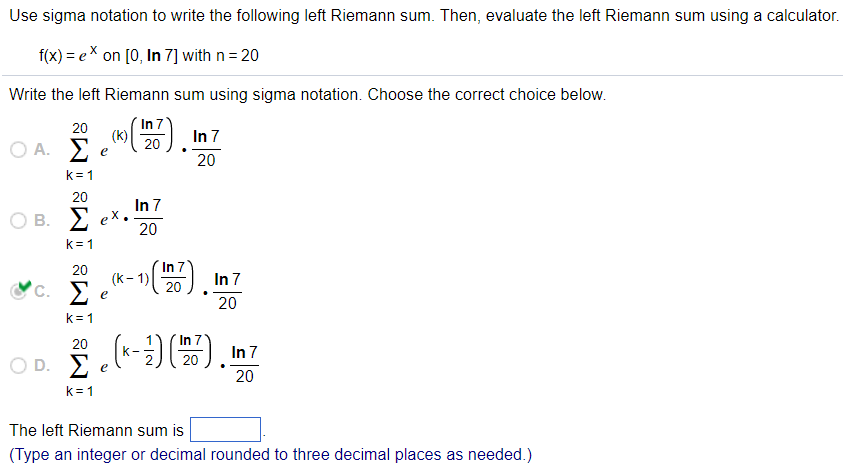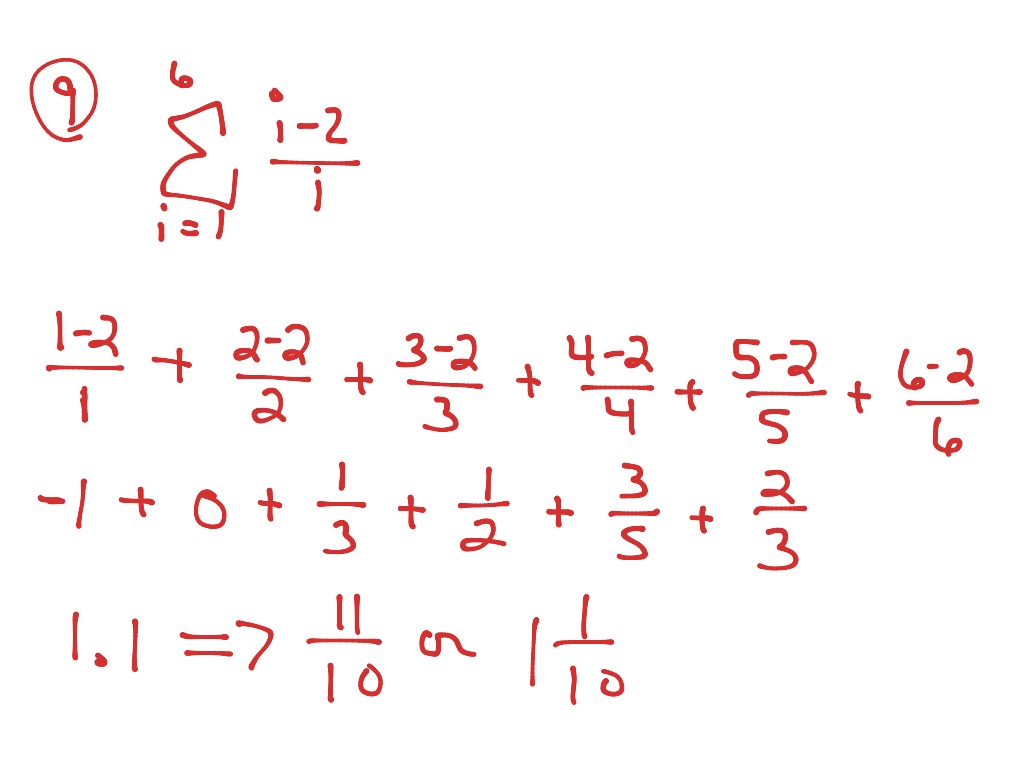
Ways that you could write it using sigma notation.

That is n equals two, that is n equals three,Īnd that is n equals four.

Is still going to work out, 'cause when n is equal to four, it's three to the four minus one power, so it's still three to the third power, which is 27 times two which still 54. And so we're increasingĪll of the indexes by one, so instead of going from zero to three, we're going from one to four. One, it's one minus one, you get the zeroth power. And instead of starting at zero, I could start at n equals one, but notice it has the same effect. Use a different index now, let's say to the n minus one power. We have our first term right over here, but forĮxample, we could write it as our common ratio, and I'll You could write it as, so we're gonna still do, This would be k equals three, which would be two times Zero, this is k equals one, this is k equals two, and then I say different color, and then I do the same color. That'll be two times three to the first power. So that's two times one, so that's this first term right there. Is gonna be two times three to the zeroth power. Many terms we have here or how high we go with our k, And so we have ourįirst term which is two, so it's two times our common Sum, and we could start, well, there's a bunch of Indeed a geometric series, and we have a common ratio of three. To go to six to 18, what are we doing? Well, we're multiplying by three. Six, what are we doing? Well, we're multiplying by three. Now, we are now adding 12, so it's not an arithmetic series. Let's see, to go from two to six, we could say we are adding four, but then when we go from six to 18, we're not adding four You can use 'pi' and 'e' for the number and the natural logarithm e (a.k.a.
Geometric sigma notation calculator series#
Let's see if we can see any pattern from one term to the next. In 'Sigma notation' mode you are to enter the lower and upper limits, a mathematical expression through which each member of the sum series is to be computed, and finally specify what is the name of the variable used in the sigma expression. I wanna use it as practice for rewriting a series like And we can obviously justĮvaluate it, add up these numbers.
Geometric sigma notation calculator plus#
determine (in simple cases) whether an infinite series has a sum.Sum here of two plus six plus 18 plus 54.write down the sequence of partial sums of an infinite series.recognise the difference between a sequence and a series.In order to master the techniques explained here it is vital that you undertake plenty of practice exercises so that they become second nature.Īfter reading Mathlibra’s pages of Sequences and Series, you should be able to: We also consider two specific examples of infinite series that sum to e and π respectively. We explain how the partial sums of an infinite series form a new sequence, and that the limit of this new sequence (if it exists) defines the sum of the series. In this unit we see how finite and infinite series are obtained from finite and infinite sequences. This is an infinite geometric series with first term a=1 and common ratioĮvaluating pi (π) and Euler’s number ( e) with series

This is an infinite geometric series with first term a=1 and common ratio r=⅖ If possible, find the sum of each infinite geometric series. This is an infinite geometric series with a 1=⅓ and r=⅓.Īs n approaches infinity, ⅓ n approaches 0. When dividing by a fraction, you can multiply by the inverse. To find r, find the common ratio using a 1 and a 2, a 2 and a 3. 11, the series is diverges and the sum does not exists. When r, the common ratio, is strictly between -1 and 1, i.e. There is a simple test for knowing instantly which geometric series converges and which diverges. If a series does not converge, then we say that it diverges. When we sum the terms of a series, and the answer we get after each summation gets closer and closer to some number, we say that the series converges.

We denote the sum of an infinite number of terms of a sequence by You might think that if you keep adding more and more terms you will eventually get larger and larger numbers, but in fact you won’t even get past 1 – try it and see for yourself! If you don’t believe this, try doing the following sum, a geometric series, on your calculator or computer: You might think that this is a silly question – surely the answer will be ∞ when one sums infinitely many numbers, no matter how small they are? The surprising answer is that while in some cases one will reach ∞ (like when you try to add all the positive integers together), there are some cases one will get a finite answer. In this section, we consider what happens when we add infinitely many terms together. Thus far we have been working only with finite sums, meaning that whenever we determined the sum of a series, we only considered the sum of the first n terms.


 0 kommentar(er)
0 kommentar(er)
